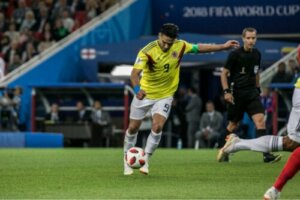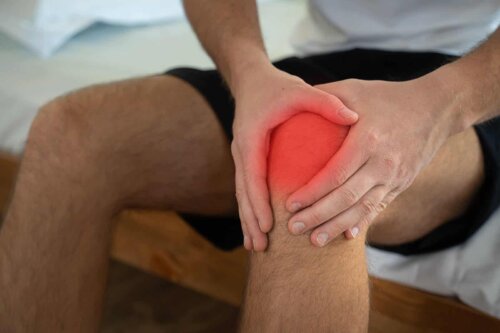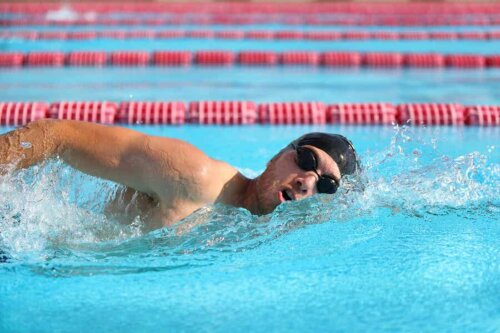How Did Radamel Falcao Recover From His Ligament Injury?

The goalie from Santa Marta is one of the best footballers in history in Colombia. He has played for clubs like River Plate, Porto, Atlético de Madrid, Mónaco, Manchester United, Chelsea, and Galatasary. However, the Tiger remembers a significant problem that caused a before and an after in his career. But how did Radamel Falcao manage to recover from his ligament injury?
The fateful moment happened during the 2013-2014 season when he was playing in a Mónaco shirt. To be more precise, January 23 2014 in a French Cup match against Chasselay in the Championnat National 2 (the French fourth division).
So, Soner Ertek caused the injury with a sweep. In a desperate attempt to get to the ball, Ertek ended up taking out Radamel’s left leg, causing the joints to move unnaturally. The worst part? A diagnosis of a partial tear of the anterior cruciate ligament.
What kind of ligament injury did Radamel Falcao suffer?
To understand the injury, we need to know about the cruciate ligaments, both the anterior and posterior, form an ‘X’ that helps join and balance the bones in the knee.
If we talk about the anterior cruciate ligament, its function is to avoid the tibia from sliding towards the external area. Conversely, the posterior cruciate ligament has the job of ensuring the tibia doesn’t slide back below the femur.
Additionally, ligament injuries can be partial, complete, or by avulsion. Specifically, a partial ligament injury is a tear to the fasciculus muscle. In turn, a complete ligament injury is where both fasciculi are worn. Finally, a ligament injury by avulsion is the separation of the cruciate ligament in an extreme case.
Baring that in mind, the medical report at that time revealed that Falcao suffered a partial tear to the anterior cruciate ligament (ACL). This injury has a recovery time of approximately 6 months, which led to Ertek putting his participation in the 2014 World Cup in Brazil at risk.

How did Radamel Falcao recover from his ligament injury?
Let’s divide it into two fundamental categories to explain how Radamel Falcao recovered from his ligament injury: physical and mental.
The first step was the operation that José Carlos Noronha – medical surgeon tasked with the job – explained to the media: “We’ll make a new anterior cruciate ligament with a patellar part from the left leg in an operation that’ll last between 50 and 60 minutes.”
After that, the process consisted of a period of 4-5 weeks of waiting for the materials to integrate and the tendon to fix. From there, it was the active physiotherapist’s turn, with several phases.
You may also be interested in: Muscle Strain: Symptoms and Treatment
Phase 1 of physiotherapy
This phase happened 4 weeks after the surgery to reduce the remaining inflammation and any unhealed pain. The specialists took the following measures:
- Perform isometric exercises
- Motor control or kinetic control
- Gradual movements until the joint can both flex and extend to 90 degrees
- Careful rehabilitation to extend the range of movement
- Gradually support the foot
Phase 2 of physiotherapy
Next, Falcao began the second phase of physiotherapy. In fact, Falcao’s progression marked the exact point where he could take the next step in his recovery. Consequently, the next phase included:
- Hamstrings and quadriceps exercises
- Proprioception activities
- Eccentric closed kinetic chain exercises
- Sitting knee elongation
- Concentric closed kinetic chain exercises
- Stationary bicycle
- Movements in a swimming pool
Phase 3 of physiotherapy
This phase began 3 months after the operation, after an MRI scan. Here, specialists set goals to recover part of Falcao’s basic sports abilities with resistance and strength.
They recommended the following:
- Flexibility exercises
- Apply eccentric and concentric exercises both for the closed kinetic chain and the open kinetic chain
- Muscle strengthening exercises
- Moderate running
- Advanced proprioception activities
- Cycling
- Swimming
- Work on aerobic resistance

Phase 4 physiotherapy
In the fourth phase of physiotherapy – the one that helps us understand how Radamel Falcao recovered from his ligament injury – he substantially improved and it became more likely that he would be able to play at the World Cup.
However, the only enemy wasn’t recovering from the partial ligament tear, but actually doing it. It took 4 months and it consisted of the following:
- Plyometric or jumping exercises
- Monopodial conditioning
- Intermediate demand running exercises
- Rhythm change movements
- Direction change sequences
Also read: Is it Possible to Improve Performance Through Diet
Radamel Falcao is back in the saddle
Between months 5 and 6, the moment of truth came and the mental aspect played a very important role during the final phase of recovery. This required a specialist to strengthen Falcao’s thoughts based on his confidence in his abilities, serenity, emotional balance, and removing any fear that a crash could trigger an injury of the same characteristics.
Despite the great effort and the infinity of sacrifices that Falcao made to recover from his ligament injury, the timeframe meant that he wasn’t on top form to be considered by José Néstor Pékerman to be chosen for the 2014 World Cup in Brazil.
However, Falcao did get back in the saddle in life. Four years later, in Russia 2018, he didn’t just participate, he was the captain!
Overall, the answer to how Radamel Falcao recovered from his ligament injury lies in perfect surgical intervention, specialized rehabilitation treatment, mental strength, and, above all, resilience.
All cited sources were thoroughly reviewed by our team to ensure their quality, reliability, currency, and validity. The bibliography of this article was considered reliable and of academic or scientific accuracy.
- Yanguas J, Til L y Cortés C. Lesión del ligamento cruzado anterior en fútbol femenino. Estudio epidemiológico de tres temporadas. Apunts Medicina de l’Esport. 2011. Disponible en: https://doi.org/10.1016/j.apunts.2011.02.006.
- Álvarez A y García Y. Lesiones del ligamento cruzado anterior. AMC. 2015. Disponible en: http://scielo.sld.cu/scielo.php?script=sci_arttext&pid=S1025-02552015000100014&lng=es.
- Long W y Scott W. Lesiones y reconstrucción del ligamento cruzado anterior: indicaciones, principios y resultados. Scott WN. Cirugía de rodilla de Insall & Scott. 5ª ed. Filadelfia: Elsevier. 2012.
- Delahunt E, Chawke M, Kelleher J, Murphy J y Murphy K. Cinemática de las extremidades inferiores y estabilidad postural dinámica en atletas femeninas con reconstrucción del ligamento cruzado anterior. Tren J Athl. 2013.
- Vaquero M, Calvo H y Forniol C. Reconstrucción del Ligamento Cruzado Anterior. Trauma. 2008.
This text is provided for informational purposes only and does not replace consultation with a professional. If in doubt, consult your specialist.








